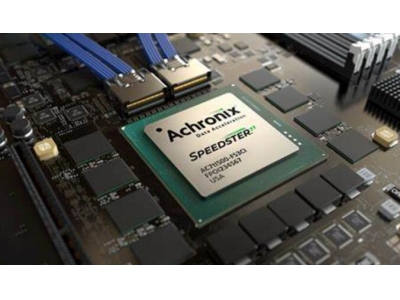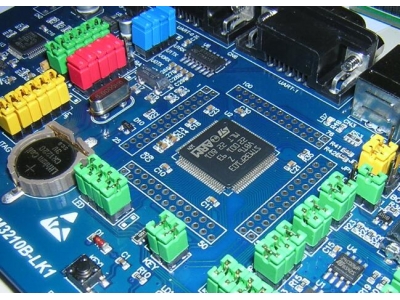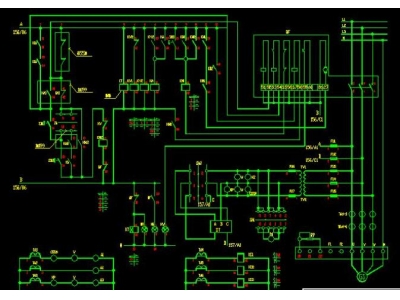mq-2采集的什么信号?
一、mq-2采集的什么信号?
MQ系列传感器使用的敏感材料是活性很高的金属氧化物半导体,传感器加热后,在不同气体浓度中电导率不同。使用简单的电路就可以将电导率的变化转换成与该气体浓度相对应的信号输出了。
MQ-2传感器对可燃气、烟雾等气体灵敏度高,基于MQ-2的烟雾传感器模块通过电路设计,提供了两种输出方式:
数字量输出:通过板载电位器设定浓度阈值,当检测到环境气体浓度超过阈值时,通过数字引脚DO输出低电平。模拟量输出:浓度越高,AO引脚输出的电压值越高,通过ADC采集的模拟值越高。
二、mq-2烟雾传感器引脚介绍?
MQ-2没有信号输入,只有信号输出。
每一边的另外2个脚(除中间脚)连在一起,这样就是2个信号输出端。
三、电路图?
画电路图需要先找好图形绘制工具 与工具相结合 能更快 更好的提高工作效率 不耽误时间 现在市场上的亿图图示功能很强大 操作简单
四、mq-2烟雾传感器怎么测阻值?
民熔MQ-2型烟雾传感器属于二氧化锡半导体气敏材料,属于表面离子式N型半导体。处于200~300摄氏度时,二氧化锡吸附空气中的氧,形成氧的负离子吸附,使半导体中的电子密度减少,从而使其电阻值增加。
当与烟雾接触时,如果晶粒间界处的势垒收到烟雾的浓度而变化,就会引起表面导电率的变化。
利用这一点就可以获得这种烟雾存在的信息,烟雾的浓度越大,导电率越大,输出电阻越低,则输出的模拟信号就越大。
五、mq-2传感器引脚怎么接芯片?
MQ-2传感器是一种可用于检测可燃气体和烟雾的传感器。它通常具有4个引脚,包括VCC(电源正极)、GND(电源负极)、DO(数字输出)和AO(模拟输出)。
要将MQ-2传感器接到芯片上,可以按照以下步骤进行:
1. 确定芯片的电源电压:首先,查看芯片的规格说明,确定芯片所需的电源电压。MQ-2传感器一般工作电压为5V,但也有3.3V版本,所以需要根据芯片的电源要求选择合适的电压。
2. 连接电源和地线:将MQ-2传感器的VCC引脚连接到芯片的电源正极(一般为5V或3.3V),将GND引脚连接到芯片的电源负极(地线)。
3. 连接数字输出引脚(DO):如果芯片具有数字输入引脚,可以将MQ-2传感器的DO引脚连接到芯片的数字输入引脚。这样,当MQ-2传感器检测到可燃气体或烟雾时,会通过DO引脚输出一个数字信号(通常是高电平或低电平),供芯片进行处理。
4. 连接模拟输出引脚(AO)(可选):如果芯片需要接收MQ-2传感器的模拟输出信号,可以将MQ-2传感器的AO引脚连接到芯片的模拟输入引脚。这样,MQ-2传感器会输出一个模拟电压信号,芯片可以通过读取该信号来获取检测到的气体浓度信息。
需要注意的是,芯片的引脚配置和连接方式可能会因芯片型号和应用而有所不同。在接线之前,请务必仔细阅读芯片和传感器的规格说明和引脚定义,并确保正确连接,以避免损坏芯片或传感器。
六、mq-2传感器怎么接到芯片中?
MQ-2没有信号输入,只有信号输出。
每一边的另外2个脚(除中间脚)连在一起,这样就是2个信号输出端。
七、mq-2烟雾传感器的工作原理?
MQ-2烟雾传感器的应用领域 可用于家庭和工厂的气体泄漏监测装置 MQ-2能够准确来说是一 个多种气体探测器。
2.
MQ-2的工作原理 MQ-2 型烟雾传感器属于二氧化锡半导体气敏材料 属于表面离子式。
3.
MQ-2的特性 MQ-2型传感器对天然气 特别对烷类烟雾更为敏感具有良好的抗干扰性。
八、mq-2烟雾传感器可以测量气体浓度吗?
可以。 mq-2烟雾传感器是半导体传感器,用于测量 可燃气体、烟雾的浓度。 注意!这种传感器对于气体、烟雾浓度的测量能力是会被“消耗”的。当接触的可燃气体、烟雾的数量达到一定程度时就会失效。所以只能用来检测偶尔出现的可燃气体(如用在火灾报警器上),用作连续测量时很快就会失效。
九、mq-5和mq-2有什么区别?
检测气体的浓度范围和气体类型不同。
mq-2可燃气体,烟雾300-10000ppm
mq-5天然气,甲烷,煤气 300-5000ppm
十、探照灯电路图
探照灯电路图: 理解、构建和优化探照灯
探照灯是一种广泛应用于舞台演出、户外照明和应急照明等领域的强光照明设备。在探照灯的核心部件之一是它的电路板,负责控制和供电。本文将带您深入了解探照灯电路图的构建和优化,帮助您了解探照灯的工作原理,并提供指导以构建高效可靠的探照灯。
了解探照灯电路图
探照灯电路图通常包括多个关键组件,如电源模块、控制模块、光源模块等。通过仔细研究电路图,您可以了解到这些组件之间的连接方式和信号传输原理。
在电路图中,常见的连接方式包括并联和串联。并联的组件同时接收相同的电压,但电流被分流到各个组件;串联的组件则依次接收电压,电流在各个元件之间相等。
此外,探照灯电路图中的控制模块通常包括变阻器、电位器和开关等元件,用于调节和控制亮度、色温等参数。
构建探照灯电路图
构建探照灯电路图需要具备一定的电子电路基础知识。以下是构建探照灯电路图的基本步骤:
- 确定探照灯的功率需求和光照要求。
- 选择合适的电源模块,确保其输出电压和电流满足探照灯的需求。
- 设计控制模块,包括亮度调节、开关控制和保护电路。
- 选择合适的光源模块,如LED光源。
- 根据电路图进行元件的连接和布局。
- 进行电路测试和参数调整,确保探照灯的性能符合要求。
优化探照灯电路图
优化探照灯电路图可以提高探照灯的性能和稳定性,延长其使用寿命。以下是一些优化措施:
- 选择高效能源: 选择高效的电源模块,以减少能量损耗和发热。
- 合理布局: 在电路板上合理布局组件,减少信号干扰和高温区域。
- 保护电路设计: 添加过流保护、过压保护和短路保护等保护电路,提高探照灯的安全性。
- 使用优质材料: 选择优质元件和材料,降低故障率和损耗。
- 热管理: 针对高功率探照灯,设计风扇散热模块,保持其正常工作温度。
结论
探照灯电路图是构建和优化探照灯的重要参考。通过深入了解电路图,您可以更好地理解探照灯的工作原理,并根据需求构建高效可靠的探照灯。优化探照灯电路图可以提高探照灯的性能和稳定性,延长其使用寿命。希望本文对您进一步了解和构建探照灯有所帮助。
Translated text in English: htmlFlashlight Circuit Diagram: Understanding, Building, and Optimizing Flashlights
A flashlight is a powerful lighting device widely used in stage performances, outdoor lighting, and emergency illumination. One of the key components of a flashlight is its circuit board, which is responsible for control and power supply. This article will take you through the understanding, building, and optimization of flashlight circuit diagrams, helping you grasp the working principles and provide guidance for constructing efficient and reliable flashlights.
Understanding Flashlight Circuit Diagrams
A flashlight circuit diagram typically consists of several essential components such as power modules, control modules, and light source modules. By studying the circuit diagram closely, you can understand how these components are connected and the principles of signal transmission.
In circuit diagrams, common connection methods include parallel and series connections. In parallel, the components receive the same voltage simultaneously, but the current is divided between them. In series, the components receive the voltage sequentially, and the current is equal between the elements.
In addition, the control module in the flashlight circuit diagram often includes components such as variable resistors, potentiometers, and switches to regulate and control brightness, color temperature, and other parameters.
Building Flashlight Circuit Diagrams
Building a flashlight circuit diagram requires a certain level of knowledge in electronic circuits. The following are the basic steps for constructing a flashlight circuit diagram:
- Determine the power requirements and lighting needs of the flashlight.
- Select a suitable power module to ensure its output voltage and current meet the requirements of the flashlight.
- Design the control module, including brightness adjustment, switch control, and protection circuits.
- Select a suitable light source module, such as LED light sources.
- Connect and layout the components according to the circuit diagram.
- Conduct circuit testing and parameter adjustment to ensure the flashlight's performance meets the requirements.
Optimizing Flashlight Circuit Diagrams
Optimizing flashlight circuit diagrams can improve the performance, stability, and longevity of flashlights. Here are some optimization measures:
- Choose efficient power sources: Select high-efficiency power modules to reduce energy loss and heat generation.
- Proper layout: Arrange components on the circuit board in a manner that reduces signal interference and high-temperature areas.
- Protection circuit design: Add protection circuits such as overcurrent protection, overvoltage protection, and short circuit protection to enhance flashlight safety.
- Use high-quality materials: Choose quality components and materials to lower failure rates and losses.
- Thermal management: Design fan cooling modules for high-power flashlights to maintain normal operating temperatures.
Conclusion
A flashlight circuit diagram is a crucial reference for building and optimizing flashlights. By gaining a deeper understanding of the circuit diagram, you can better comprehend the working principles of flashlights and construct efficient and reliable flashlights according to the requirements. Optimizing flashlight circuit diagrams can enhance performance, stability, and lifespan. We hope this article helps you further comprehend and build flashlights.





